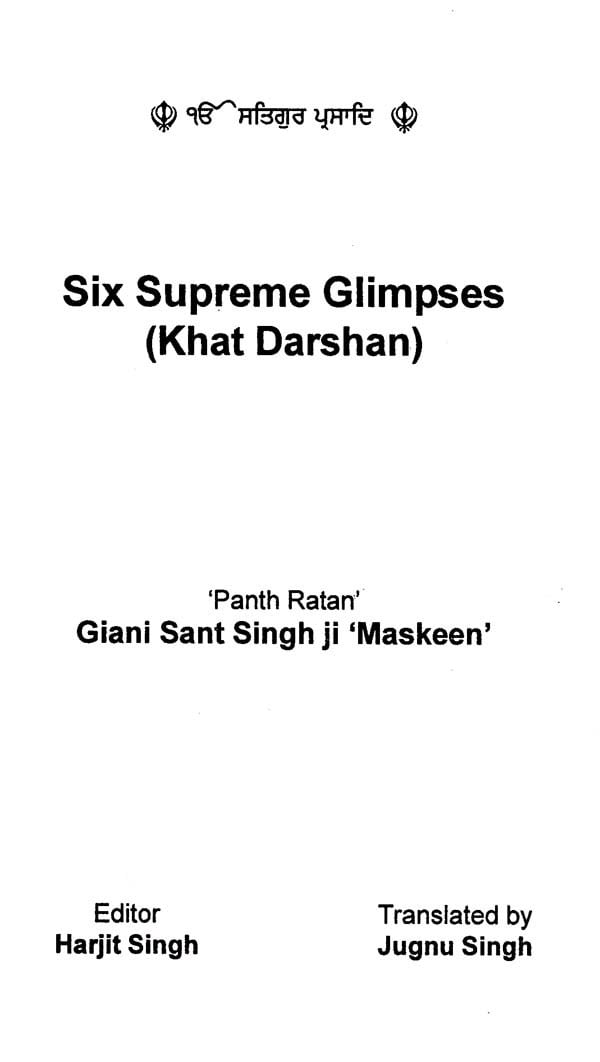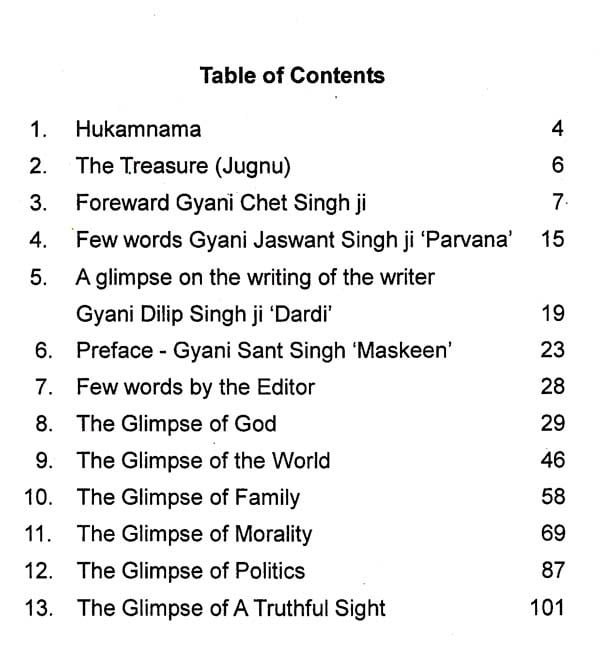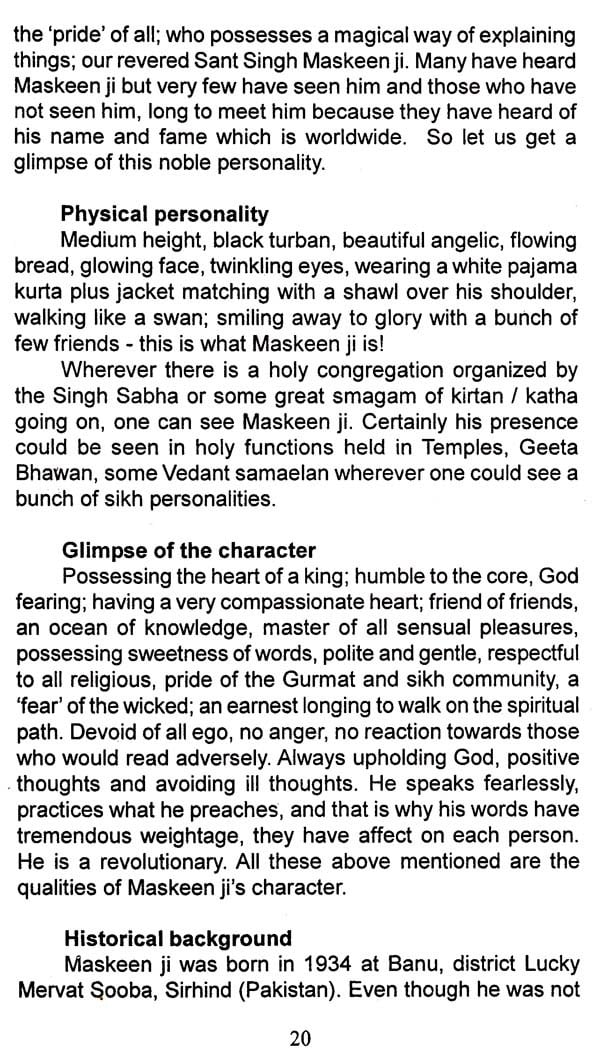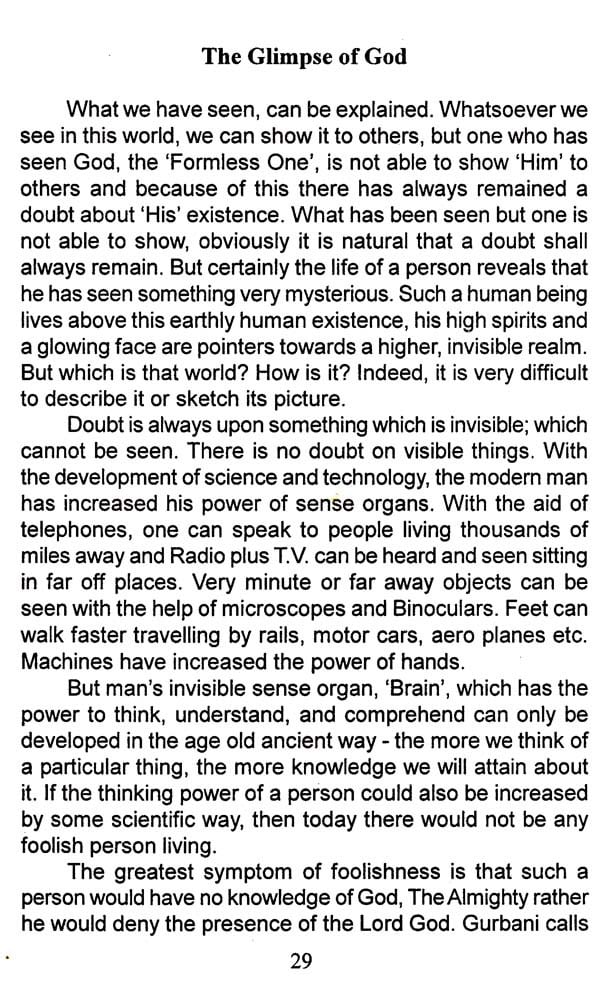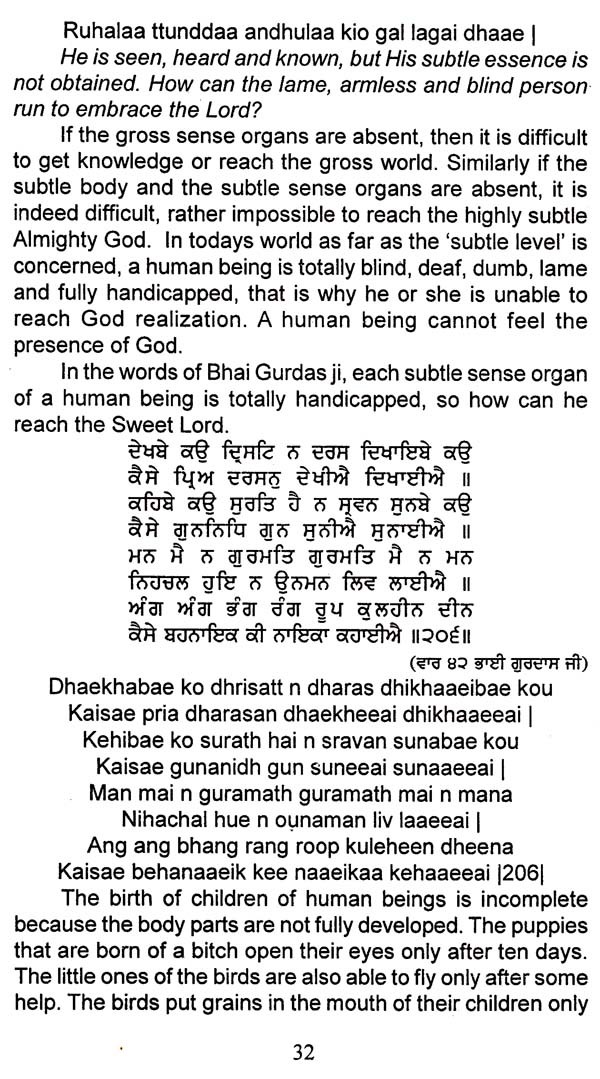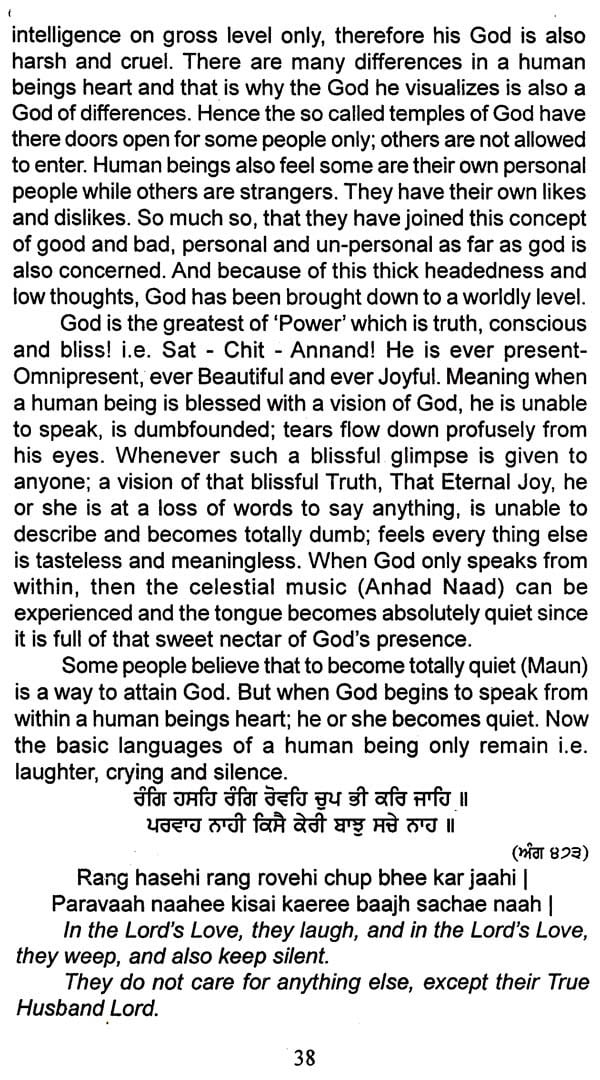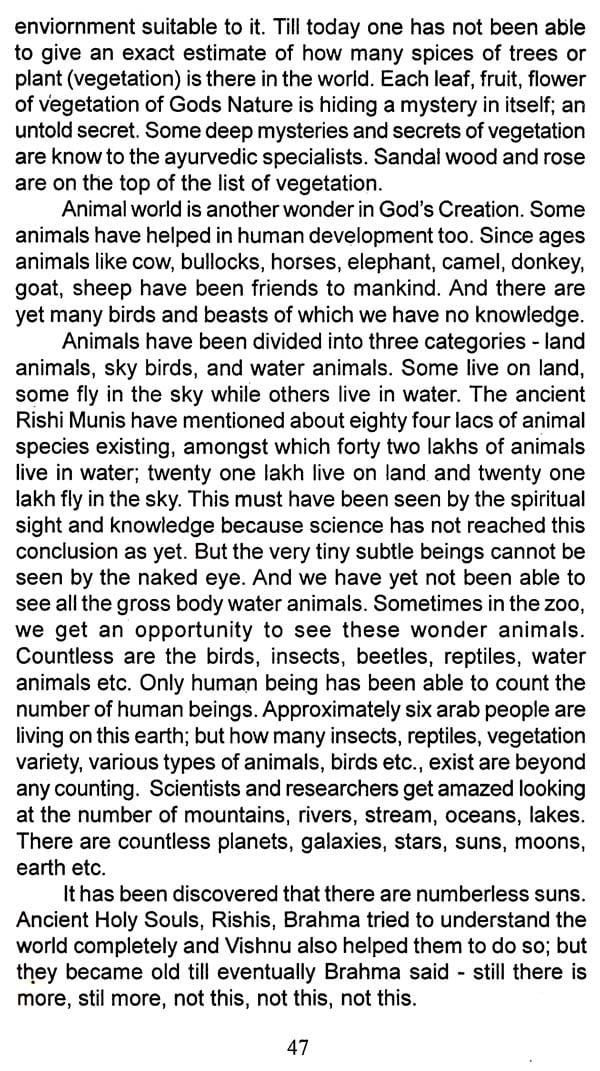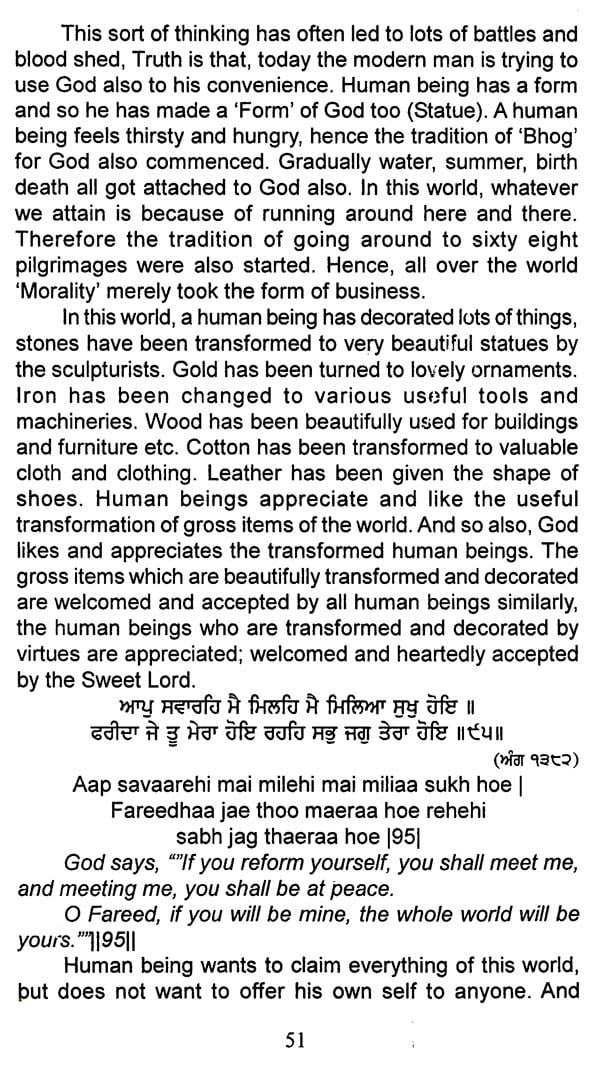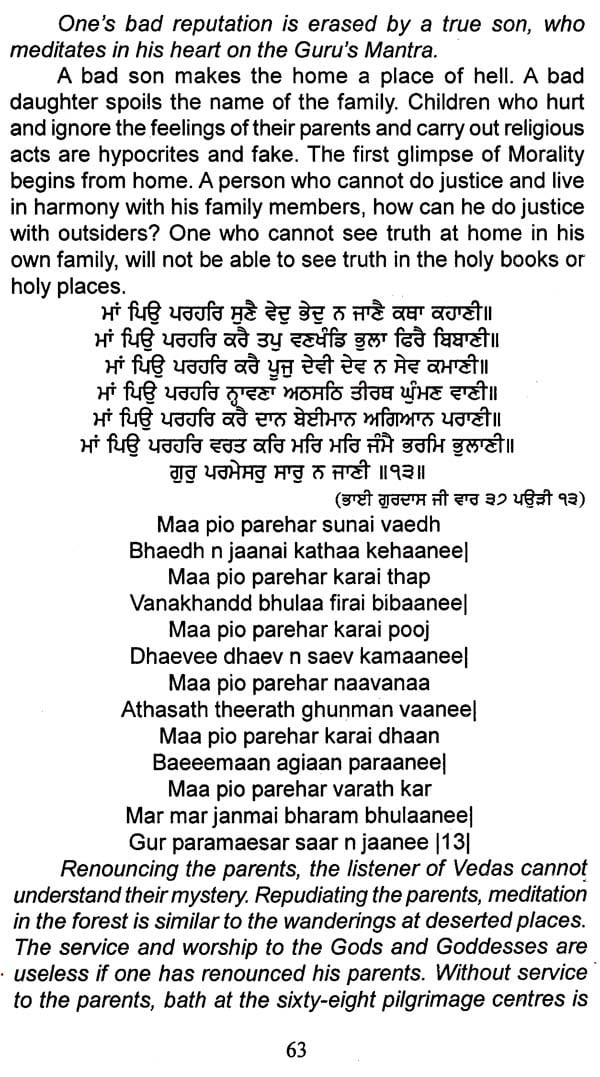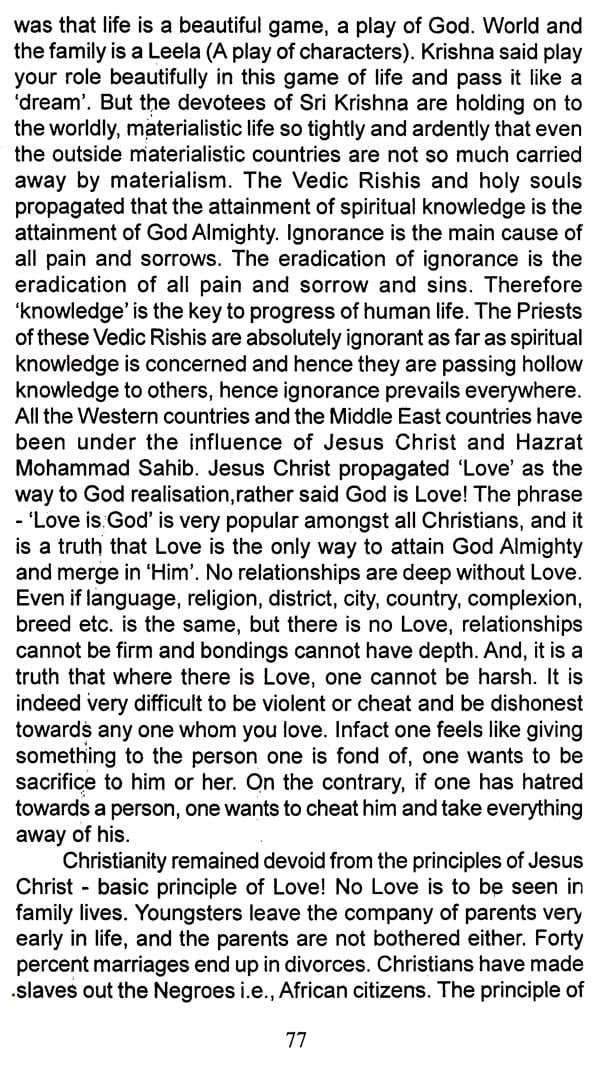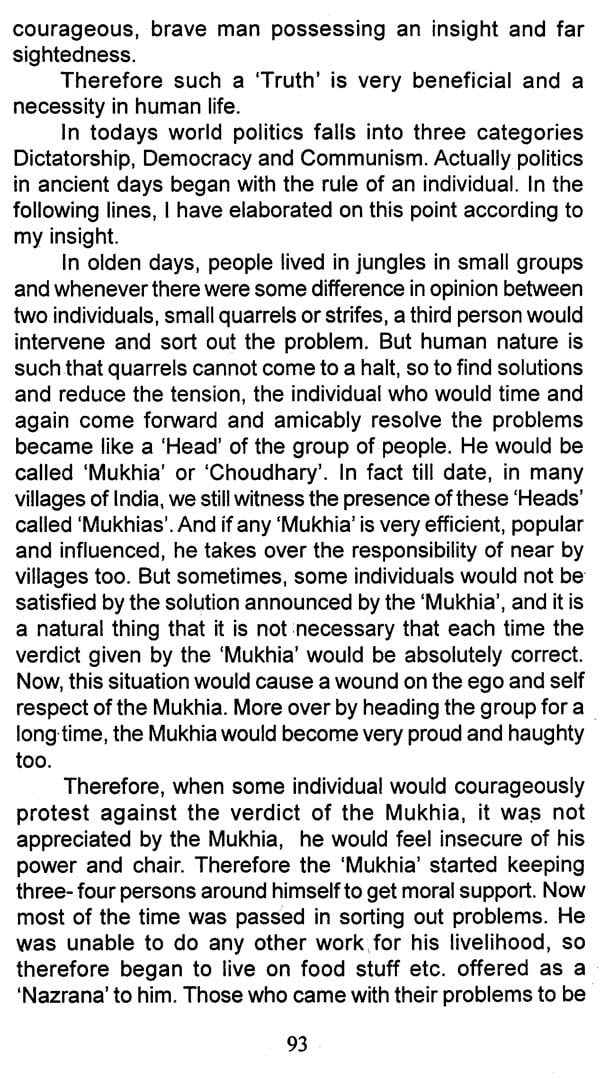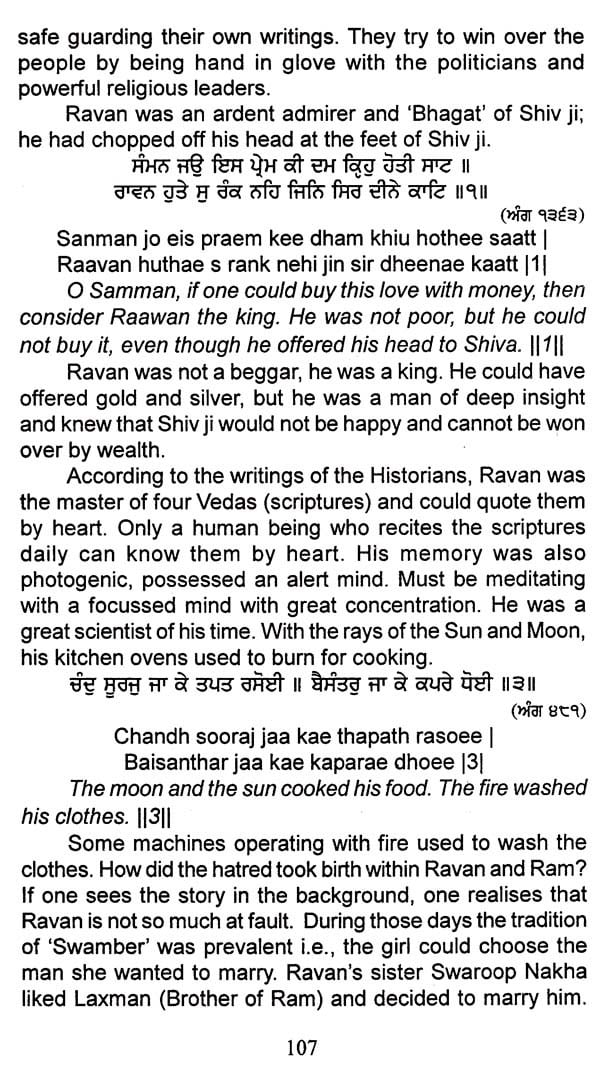
Six Supreme Glimpses (Khat Darshan)
Book Specification
| Item Code: | UAZ955 |
| Author: | Jugnu Singh |
| Publisher: | Gurjyoti Enterprises, Rajasthan |
| Language: | English and Punjabi |
| Edition: | 2019 |
| Pages: | 112 |
| Cover: | HARDCOVER |
| Other Details | 8.80 X 5.80 inch |
| Weight | 260 gm |
Book Description
ਛਿਅ ਘਰ ਛਿਅ ਗੁਰ ਛਿਅ ਉਪਦੇਸ ॥
ਗੁਰੁ ਗੁਰੁ ਏਕੋ ਵੇਸ ਅਨੇਕ ॥੧॥ (ਅੰਗ ੧੨)
Chhia ghar chhia gur chhia oupadhaes |
gur gur eaeko vaes anaek [1]
Therefore, there are Six Shastras, and six holy souls who have written them. The names of these six Shastras are Visheshak, 2. Neeayae, 3.Sankh, 4. Patanjal, 5. Memasa, 6 Vedant. The writers of Visheshak is Kannada Muni, the writer of Neeayae is Gautam Rikhi, the writer of Sankh is Kapil Muni, the writer of Patanjal is Patanjal, the writer of Memasa is Jaiman Rikhi; and the writer of Vedant is ved Vyas. Each of them have their own different teachings, message and principle. What is their original, different principle? They should also be briefly explained to the readers. Visheshak believes that the origin of this existence is from atoms; plus the complete knowledge of material objects is salvation. This is its principle as well as its message. Gautam Rikhi, the writer of Neeayae believes in the complete knowledge of sixteen material objects and says that the collection of atoms is the origin of this existence. This is his principle as well as his message. Kapil Muni, the writer of Sankh believes that salvation is looking at 'self' as separate identity from 'Nature' with the knowledge and power of discrimination. He also believes that this world is eternal plus it keeps changing. This is his message and principle. Patanjal Muni the writer of Patanjal believes that 'Nature' is the 'affect and God is the 'Cause' of the origin of this existence. He further says that by the practice of Yoga, the 'Mind' gets purified and with the 'light' of spiritual knowledge one perceives the 'Soul' as a separate identity from 'Nature'. He believes in this principle and calls it salvation, hence this itself is his message.
Ved Vyas, the writer of Vedant says that every thing originated with the power of 'Brahm' with the aid of 'Maya' and eventually will merge into the 'Brahm' l.e. the Creator. Because of this creation a human being considers himself as a separate identity from Creator. And when the veil of difference is lifted then both the creator and creation seem one and the same thus enlightenment, salvation is obtained. This is the principle and message of Ved Vyas ji.
Even though all the above mentioned have different principles and belong to varied schools of thought, yet Satguru ji says they are all talking about One Guru i.e. the Almighty Supreme Being and God realisation can be attained only by the remembrance of 'His' Holy Name. The founders of the above schools of thought spread their message amongst the public according to the rites and rituals, suitable to the current society and according to the need of the hour but they do not at all mention the 'Name' of the Almighty Lord. That is why Guru Sahib says that The Guru Shastar (Book) is beyond description, beyond human comprehension and beyond words.
**Contents and Sample Pages**
